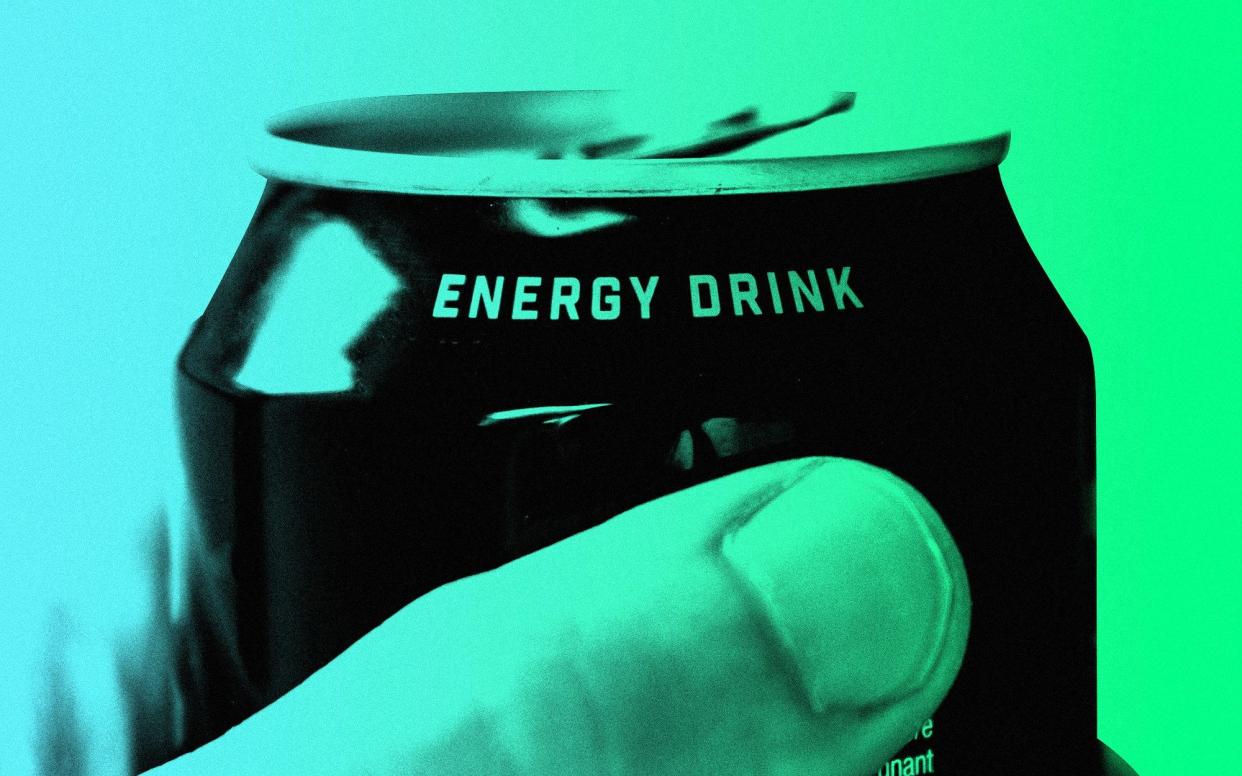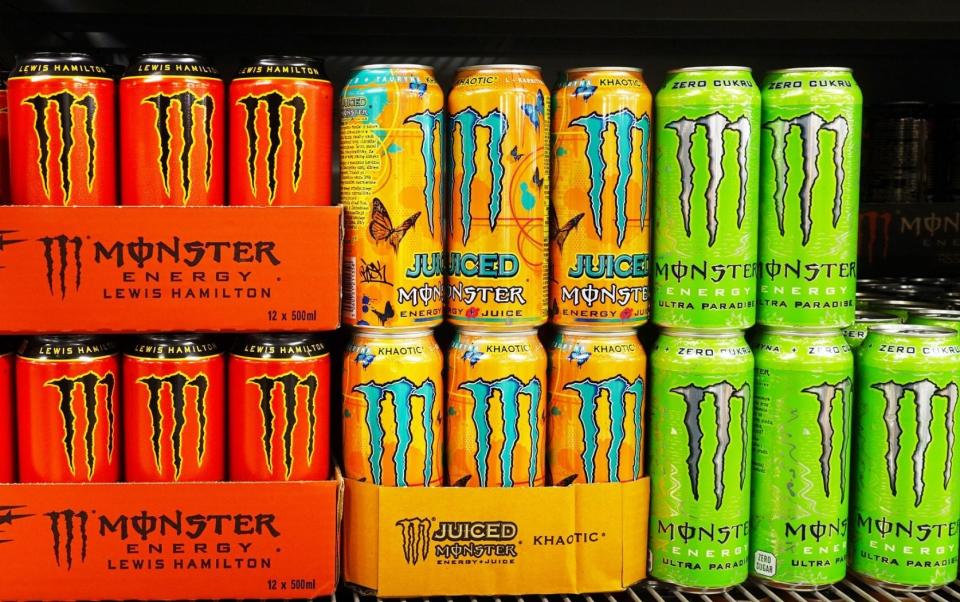More sugar than coke, more caffeine than coffee – the ‘dangerous’ energy drinks that Britain’s teens are hooked on

Around 1.7 million people in the UK consume energy drinks two or three times a week, and a third of children in the UK consume caffeinated energy drinks on a weekly basis – with teenagers in the UK the biggest consumers of energy drinks in Europe, consuming over a litre a month more than the European average.
But now Labour has pledged to ban energy drinks for children under 16 due to their “dangerously high” caffeine content.
The ban, enforced by national trading standards, would prevent children under 16 from purchasing drinks containing more than 150mg of caffeine per litre.
The party said it would outlaw the “toxic” products for schoolchildren to prevent them turning up to class “wired on the equivalent of three shots of espresso”.
But these short-term effects are far from the only issue for children hooked on energy drinks. Studies are mounting to show a variety of problems, from medical emergencies that have been linked to high consumption of energy drinks such as acute mania and stroke, to an increased risk in young people of serious mental health issues such as anxiety, depression and suicidal thoughts – the sleep-induced disruption from consuming too much caffeine and stimulants thought likely to be the source of the mental health problems. In the cases of some vulnerable people, high consumption of energy drinks has even been linked to sudden cardiac arrest.
Earlier this week, a group of researchers in the US published a study indicating that energy drinks can raise the risk of abnormal heart rhythms, a condition known as arrhythmia.
Through examining the case notes of 144 people who had suffered cardiac arrests, they found that seven had consumed an energy drink shortly before their heart stopped beating. Three of these patients were found to regularly consume the drinks, and four had genetic heart conditions, with the researchers concluding that anyone with underlying heart abnormalities should limit their consumption.
The new findings build on a growing body of research. Last autumn, amid steadily growing concerns regarding energy drinks and what regular consumption might be doing to our health, a group of researchers at the University of Pisa and Sapienza University of Rome came together to publish a definitive summary of how they impact the human body.
The resulting scientific paper, The Dark Side of Energy Drinks is a shocking polemic of how the combinations of ingredients within products such as Red Bull, Monster and Lucozade can affect organ systems from the brain to the gut.
“They are more dangerous than we think,” says Dr Safia Debar, executive health GP at Mayo Clinic Healthcare in London.
With almost half a million people in the UK consuming energy drinks more than once a day, according to market research specialists Kantar, what are the potential problems associated with the drinks and how exactly can they affect our health?
What is in energy drinks?
Energy drinks are perhaps best known for the high doses of caffeine they deliver with studies previously showing that regularly consuming these products can initiate physical dependence on caffeine.
As a yardstick, a 330ml can of Coca-Cola contains around 33mg of caffeine, while a mug of instant coffee gives you around 80mg of caffeine. However, according to The Dark Side of Energy Drinks paper, 500ml of either Red Bull or Monster contains 160mg of caffeine, while 500ml of Sting energy drink contains an astonishing 290mg.
This has various physiological effects on the body. “We know at a very basic level that caffeine will affect heart rate and blood pressure,” says Prof Amelia Lake of Fuse, the Centre for Translational Research in Public Health, an institution which has led the UK’s efforts to investigate how energy drinks impact health. “But energy drinks also contain loads of other stuff that we don’t have any evidence base for.”
In addition to caffeine, most brands deliver a cocktail of compounds including the stimulant guarana, as well as L-carnitine and taurine, derivatives of certain amino acids found throughout the body. While taurine has gained some attention in recent years as a possible longevity supplement, it remains understudied in humans, and concerns have been raised that excessive doses of taurine could be linked to acute kidney injuries.
Energy drinks have also been previously criticised for containing excessive amounts of added sugar. Drinking 500ml of Red Bull will see you ingest 54g of sugar – equivalent to 13-and-a-half teaspoons.
While some leading brands have responded by launching sweetener-flavoured alternatives such as Red Bull Sugarfree, with Prime drinks also opting for sweeteners over added sugar, there are growing fears about the possible health risks of many widely used sweeteners such as aspartame, sucralose and acesulfame K.
Debar is concerned about the combination of caffeine and sweeteners on the balance of hormones such as insulin when it comes to inducing dependence. “People don’t realise that artificial sweeteners still have an insulin-raising effect on the body which impacts your blood sugar,” she says. “And if you think about the buzz from the caffeine, and then changes in your metabolism and blood sugar control, if you’re having them regularly, it will lead you to chase that buzz and lead to more general excess caffeine consumption.”

What do these ingredients do to the body?
Aside from the risk of dependence, the possible adverse effects documented by The Dark Side of Energy Drinks study include anxiety, gastrointestinal disturbances, dehydration and tachycardia – the medical term for when heart rate still exceeds 100 beats per minute despite being at rest.
Some of this has been attributed to large doses of caffeine. Ingesting more than 500mg of caffeine has been associated with restlessness, insomnia, tremors and sometimes seizures, even in people without a history of epilepsy.
But the cocktails of chemicals within these drinks are also thought to overstimulate a crucial regulatory network within the body called the adrenergic system, which plays a key role in the functioning of both the heart and the central nervous system. It is this process which is thought to be behind some of the medical emergencies that have been linked to high consumption of energy drinks such as acute mania and stroke.
What are the risks for children?
Much of Fuse’s research has been prompted by concerns over the aggressive marketing and promotion of energy drinks to the teenage and young adult market through associations with industries such as music, gaming, as well as action and extreme sports.
“The prime age group is the young,” says Lake. “All these things which are cool are being linked to these caffeine-containing drinks, which sometimes also contain quite a lot of sugar.”
Since 2016, Fuse has helped reveal that energy drinks are often cheaper than bottled water through multi-pack promotional deals and are typically marketed towards young adults through targeted sponsorships and sexualised imagery.
In January, the institute released a new study in the journal Public Health, highlighting that teenagers who consume more energy drinks are more likely to have disrupted sleep patterns as well as an increased risk of serious mental health issues such as anxiety, depression and suicidal thoughts. Their academic performance was also found to be affected.
Lake suspects that the sleep-induced disruption from consuming too much caffeine and stimulants is likely to be the source of the mental-health problems.
“If that’s happening in children, it’s also likely to be happening in young adults as well,” she says.
What can we do?
While there is considerable anecdotal evidence linking a high consumption of energy drinks to serious medical emergencies, it remains hard for academics to prove a causal link.
One of the reasons for this is because the NHS does not currently code for energy drink consumption when compiling data on patients who have been admitted to A&E.
“You get these occasional stories of medical issues [which have been linked to energy drinks] but academically, it’s really difficult to do reviews of this data in this country,” says Lake.
While a number of countries have attempted to regulate energy drinks, with Lithuania and Latvia even successfully banning sales to under-18s, the UK Government has yet to take such a step, although consultations have been run looking at ending the sale of energy drinks to children in England.
The authors of The Dark Side of Energy Drinks concluded that given the amount of caffeine in the average energy drink, people should drink no more than one can at a time and two cans per day to stay within an acceptable safety limit. They also argued that manufacturers should be obliged to clearly state the daily intake limit for products containing high levels of caffeine.
For now, Lake agrees there needs to be clearer messaging around the risks of energy drinks and to help children and young adults understand that they are different to ordinary soft drinks.
“Maybe they need to be on a different aisle,” she says. “There needs to be more obvious warning labels. The labels are there but they are teeny tiny and on the back, and quite hard to see. So there does need to be a bit more responsibility by the manufacturers as well.”

 Yahoo News
Yahoo News 
